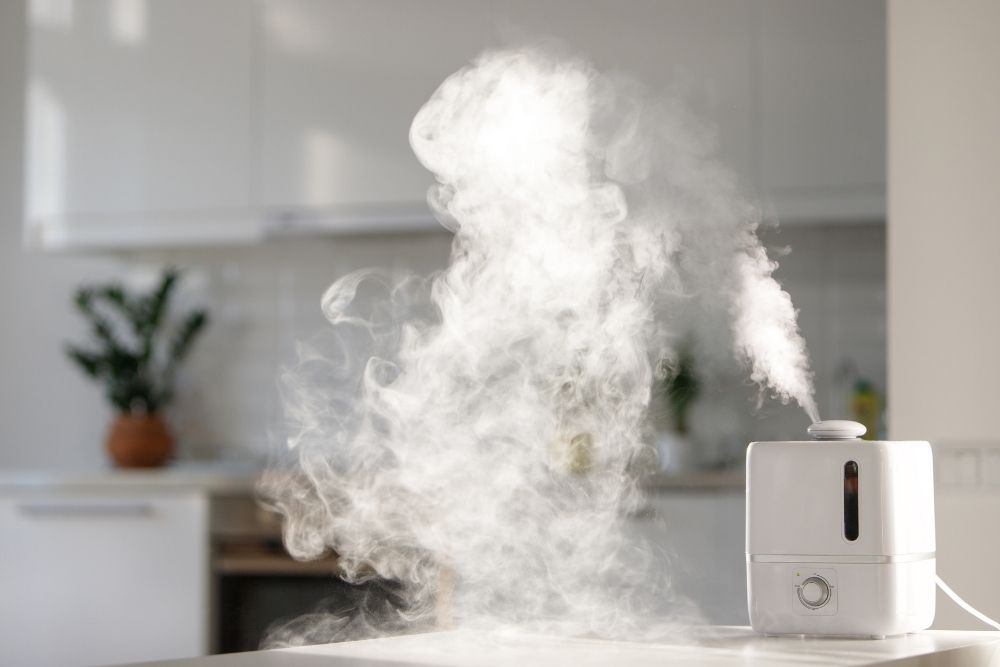The atmosphere allows all animals to breathe and survive. More specifically, oxygen, which is the most abundant component of the atmosphere that we use.
Regardless, you can improve the air you breathe inside your home by using air purifiers, humidifiers, dehumidifiers, or diffusers. Each of these has a purpose in improving the air you breathe, but today we will concentrate on comparing diffusers Vs. Air purifiers.
Let’s start by looking at the definition of each device.
Contents
Definitions
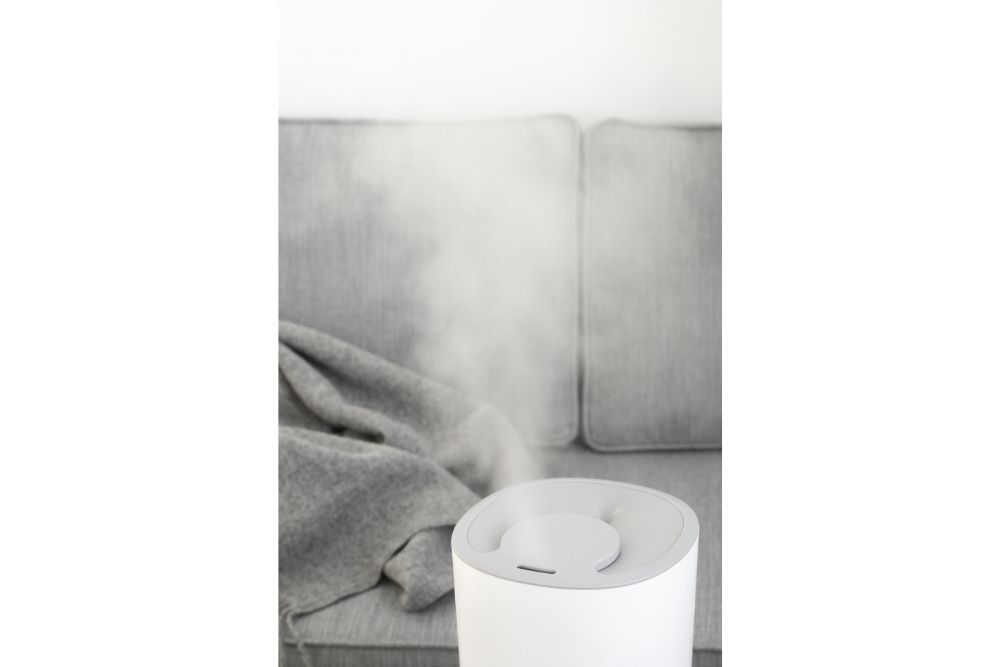
The simplest and most straightforward way to define both is to consider the function they serve:
An air purifier cleans the air, while an air diffuser adds fragrance to it.
When inhaled, the air purifier eliminates all of the nasty and potentially harmful airborne molecules. It purifies the air so that it is safe to breathe.
People use diffusers to release aromatic scents into the air. Their mechanisms are an output, not an input. Air purifiers take in and clean the air internally before releasing it, whereas diffusers only dissipate the aromatic fragrance added inside the device.
Who is the Product For?
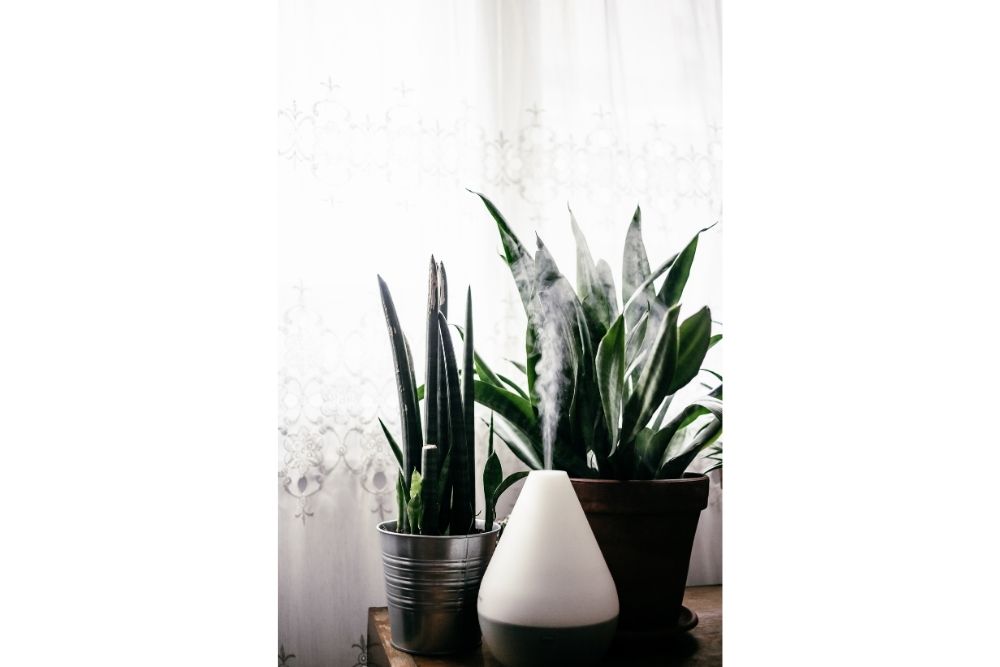
Air purifiers are ideal for those who suffer from airborne allergies triggered by allergens such as pet dander, dust, pollen, or even mold—anyone suffering from an allergy from these triggers is an ideal candidate for this device.
Diffusers, on the other hand, are aromatherapy tools. They release fragrant oils into the air for a variety of reasons. The benefits of the specific scent are dependent on the essential oil released into the air. Diffusers have a broader target audience than air purifiers because anyone who wants to make their surroundings more aromatic can use them.
How Do They Work?
Air purifiers

Air purifiers draw in ambient air, filter out pollutants, sanitize it, and then release it back into the atmosphere. This is an example of one type of air purifier with filters within its system.
The second type of air purifier is a filterless air purifier. This type cleans the air by emitting negative ions, which attach to pollutants in the air and heavier. As a result, they fall to the ground, and you can no longer breathe them in.
Wearable air purifiers adapt to the same phenomena of negative ion release.
Diffusers
Diffusers do not take in air but rather emit air infused with fragrant molecules. There are various types of diffusers, each with its own set of characteristics that govern how they function.
Diffusers made of ceramic or terra cotta
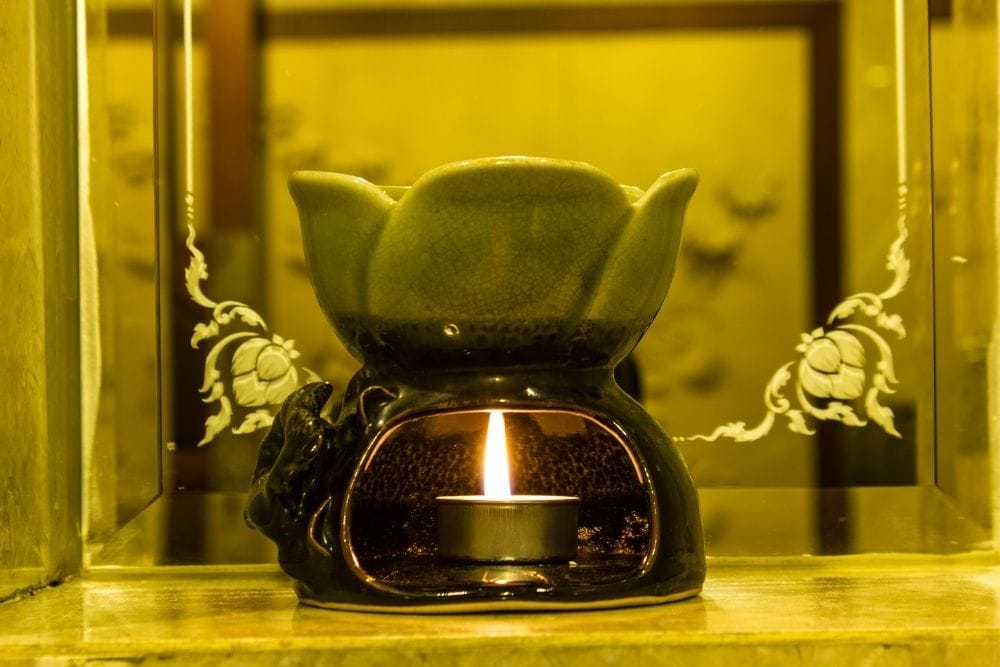
The first is a ceramic diffuser, which allows the oils to evaporate before diffusing them into the air. When you add a drop or two of aromatic oil on the terra cotta or ceramic diffuser, the aromatic molecules dissipate after heating.
These are ideal for small spaces. They might not be as effective in larger or more open areas.
Diffusers with reeds
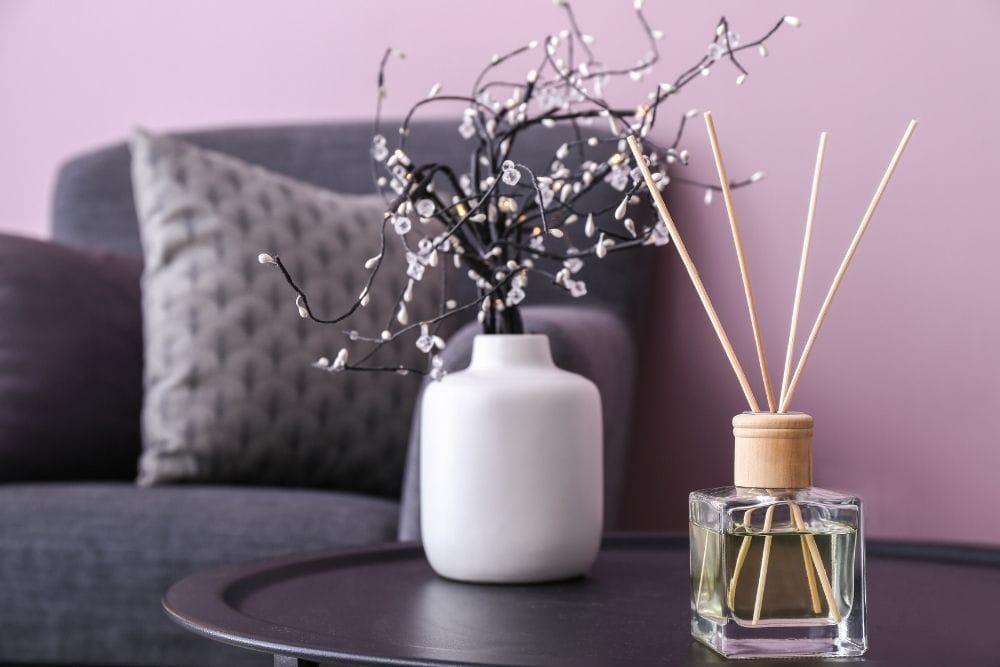
A reed diffuser consists of rattan sticks, which allow the fragrant oil molecules to move up the sticks and dissipate the aromatic fumes. These types also use heat.
The best essential oils to use with these diffusers contain light molecular weights, such as grapefruit or bergamot.
Diffusers that use electricity
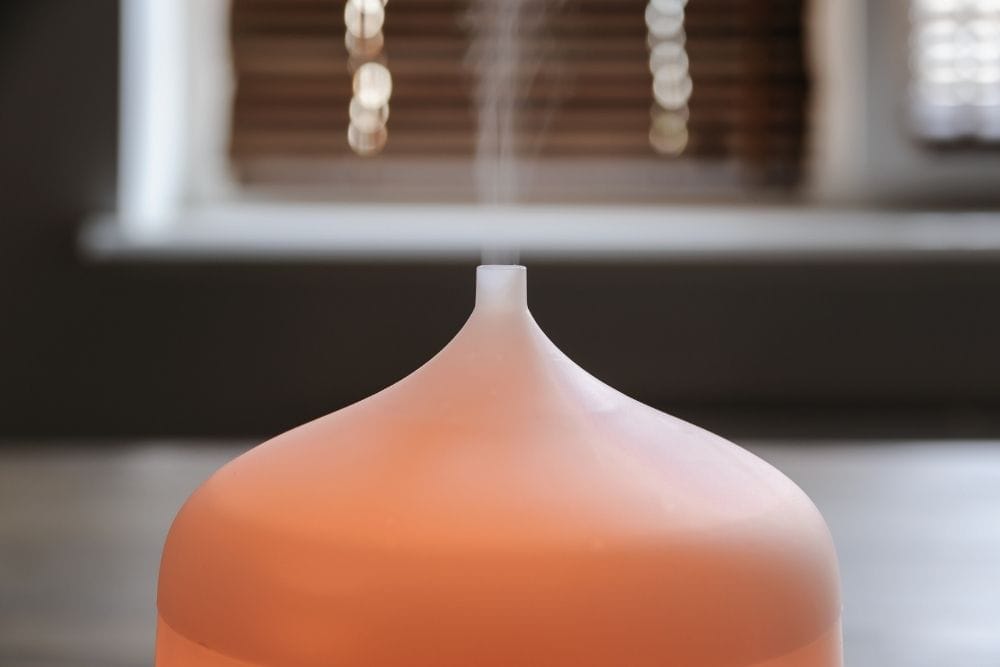
These types dissipate the fragrant oil molecule without the use of heat. Instead, they use an electric fan to propel the oil molecules into the air. You mix water with a few drops of essential oil and add in the electric diffuser.
Candle Diffusers
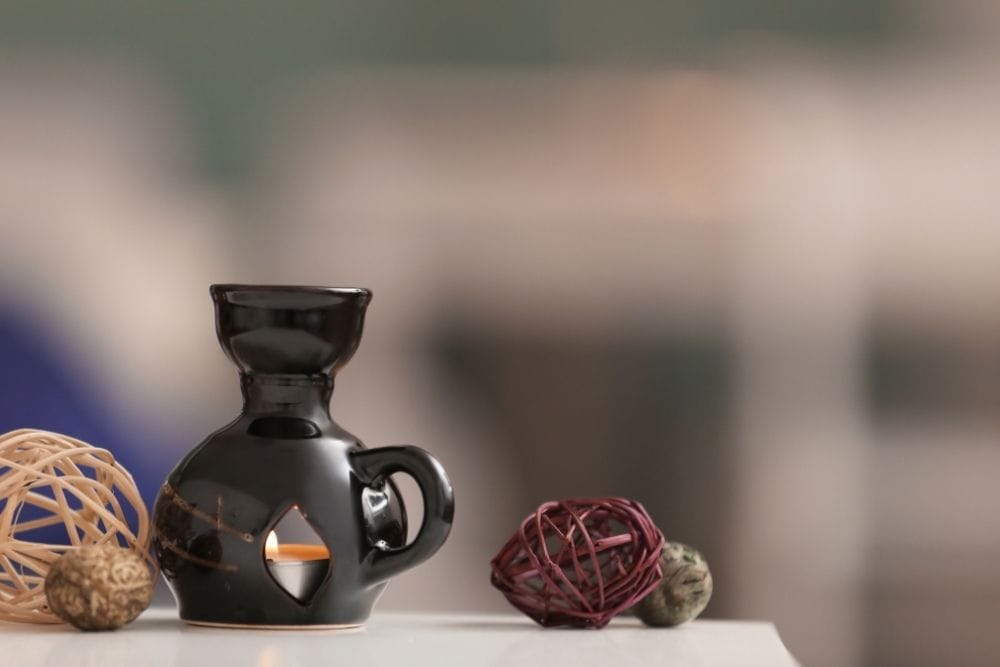
The heat from a candle flame evaporates the fragrant oil before dissipating it into the surrounding open-air in these diffusers.
Nebulizing Diffuser
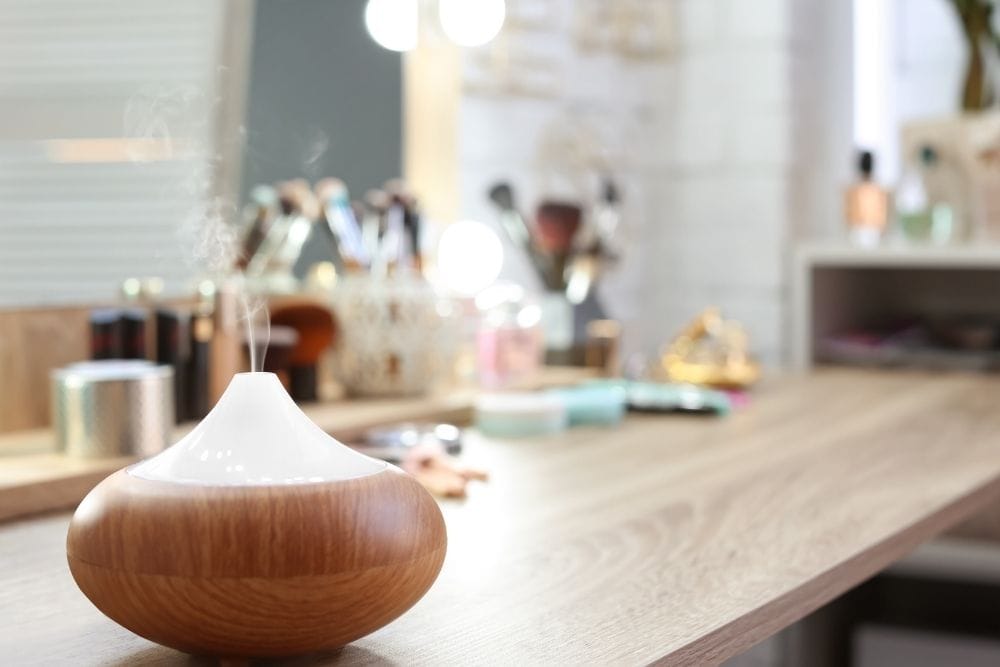
Nebulizing Diffuser typically consists of a motor and a glass section. These are the most expensive and require the most maintenance of all diffuser types.
Ultrasonic Diffuser

These diffusers use water but differ from electronic ones in that they generate vibrations within the water, converting it into a mist sending it into the air. You can also use it as humidifiers to raise a room’s humidity level without adding essential oils to the water paddle.
If we compare the options above, diffusers win because they have a more comprehensive range of options. There are only two types of air purifiers, whereas there are six types of diffusers.
General Features of Air Purifiers and Diffusers
Air Purifiers
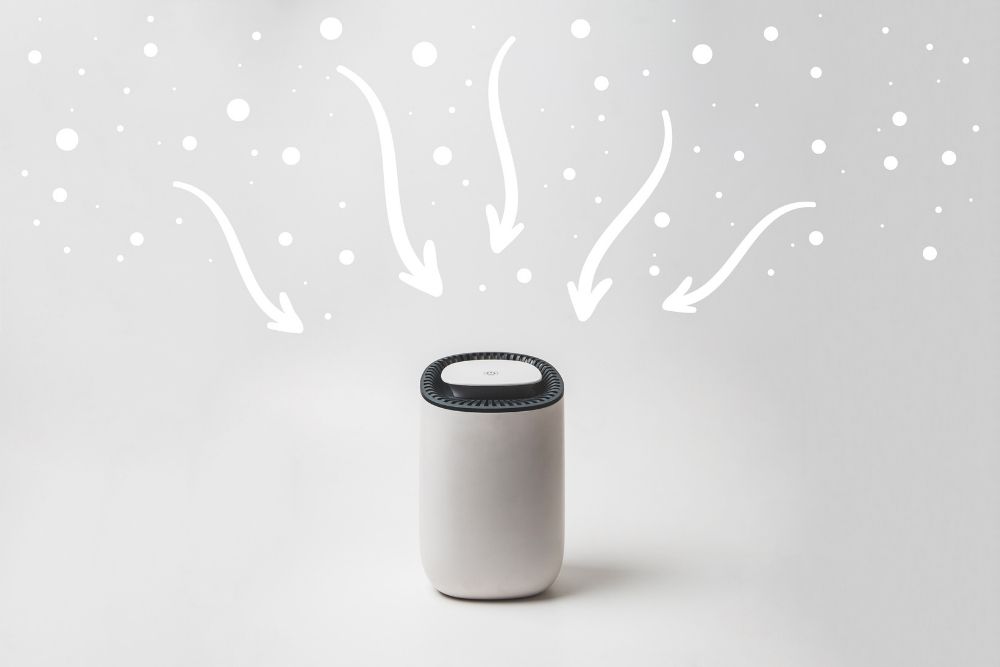
Filtering mechanism
In air purifiers, there are essentially two types of filtering mechanisms: mechanical and electrostatic precipitators.
Mechanical filters, also known as High-Efficiency Particulate Air filters (HEPA), use fine glass threads with a diameter of 0.5 microns to collect pollutants in the air.
The electrostatic precipitators generate a cloud of free electrons through which the dust particles must pass. They become charged, making them easy to collect. They can pick up particles as small as 0.01 microns in diameter.
The materials used
The majority of air filters, whether electrostatic or HEPA, have a plastic exterior. High-impact polystyrene, high-density polyethylene, or polypropylene are the most common materials used in this plastic.
Then there’s the electric fan, which forces air through the filters. The device’s buttons control the fan.
HEPA air filters are made of plastic fibers or borosilicate glass fibers. They are typically bound together with a 5% acrylic binder.
To generate the ions, the electrostatic air purifiers use steel wires connected to earthed steel charging plates.
Others include an activated charcoal post-filter chamber.
Additional features
- Night light.
- Batteries.
- Adjustable fan speeds.
Diffusers
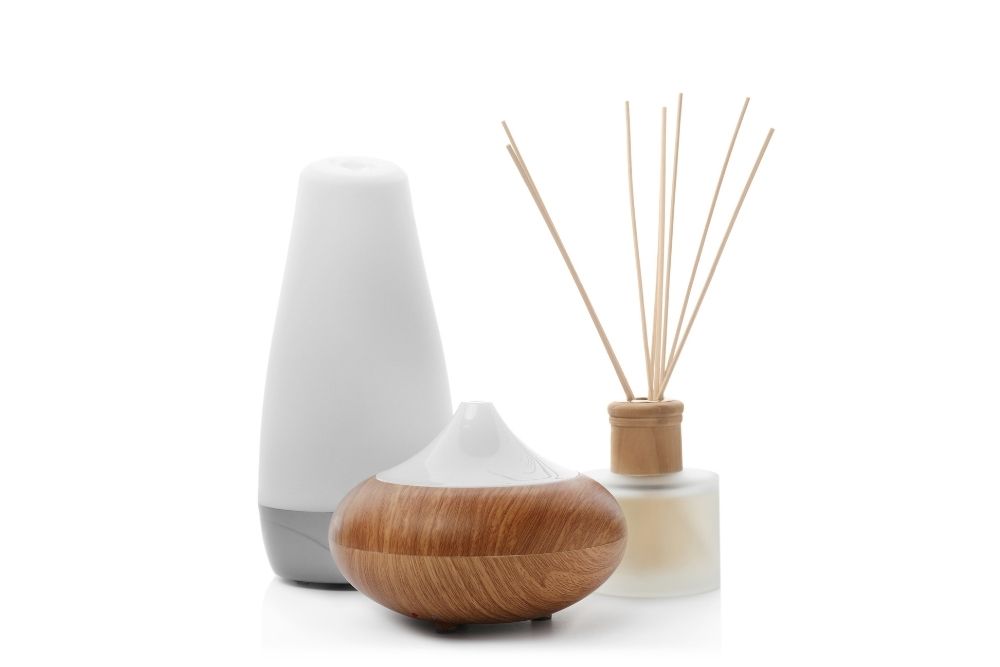
All diffusers have an outlet
An outlet is crucial for any diffuser, whether ultrasonic or nebulizing. The fragranced air usually jets out of a mouth-like protrusion or a hole left open into the surrounding air.
They all have a dedicated slot to place the essential oil.
Regardless of the type, they must all have a holding pen where the user places the essential oil drops. Some have a larger pen where you fill it with water and then add a few drops of essential oil, while others have a spot where you place the undiluted essential oil, and it evaporates into the air.
Source of energy
Finally, all diffusers have a source of energy used to dissipate the essential oil molecules and propel them into the air. Some diffusers use heat from a candle or a heated coil. Some use electricity to make a mist out of a mixture of water and fragrant oil.
Additional features
- Night light.
- Adjustable diffusing/misting settings.
- Changeable color schemes.
Top Specific Products
Diffusers
1. InnoGear Essential Oil Diffuser
2. Pure Daily Care Ultimate Ultrasonic diffuser
3. Ominihome Essential Oil Diffuser
4. VicTsing Essential Oil Diffuser
5. Homasy Diffuser with Essential Oils
Air Purifiers
1. Levoit Air purifier
2. Winix 5500-2 Air Purifier
3. Coway AP-1512HH Mighty Air Purifier
4. Honeywell HPA300 True HEPA Air Purifier
5. PARTU HEPA Air Purifier
Affordability
The higher the price, the more sophisticated the unit. With shipping costs, the price increases.
On the other hand, diffusers’ price is depending on the color, brand, and size you choose.
When comparing the cost of a diffuser versus an air purifier, diffusers are less expensive.
Safety
Both devices are entirely safe for use, with no reports of mishaps. They are ideal for use in households with children, but you must keep them out of children’s reach for obvious reasons, to prevent them from interfering with the devices.
You should clean all kinds of diffusers regularly, and change the air purifiers’ filters when needed. It would help if you disconnected the units from electricity before cleaning to avoid electrocution.
Customer Reviews
Good reviews
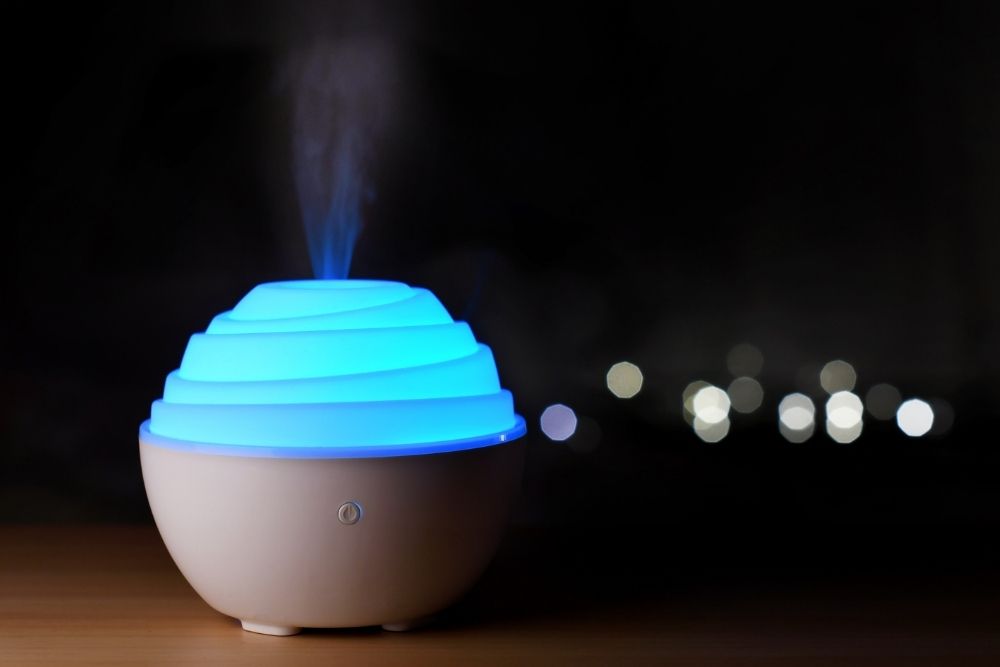
Air Purifiers
Clients appreciate the various stages of air purification because each effectively removes the majority of air pollutants while also removing the most bothersome allergens from the air.
Many people appreciate compact air purifiers size as they can place them wherever they want in the house.
Most of the air purifier’s designs in the market are appealing and do not make anything appear out of place.
They are simple to clean and maintain.
Diffusers
Bestseller diffusers are small and powerful. Many people choose these kinds, especially if they have a multipurpose aspect, which goes far beyond simply making the air smell nice.
Most diffusers’ aesthetics make them appealing, and you can use them in any room of the house.
The variety in colors, airflow, and waterless shut features on diffusers make them versatile devices beloved by many.
Bad reviews

Air purifiers
Certain users dislike the noise some air purifiers make because they can get pretty loud. Even when set to silent, they may emit obnoxious noises.
Some air purifiers fail the smoke test on several occasions.
Diffusers
Some devices leak at the bottom and thus do not dissipate the oils properly, posing a risk of electrocution resulting in wastages and ruining of surfaces.
Some users report that their diffusers stopped working after a few months.
Which is Better?
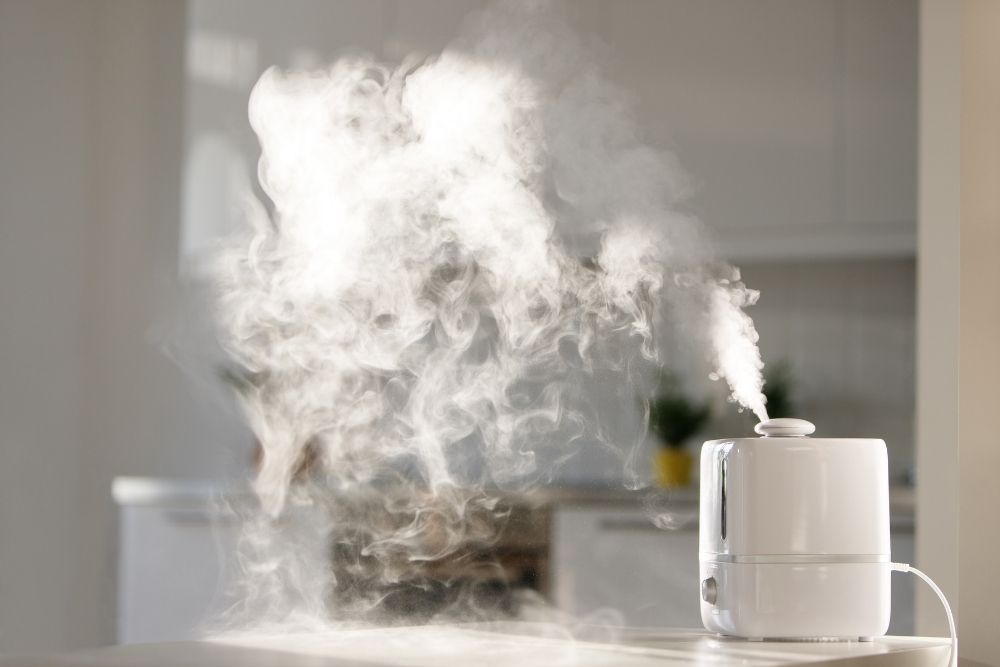
When choosing between a diffuser vs. air purifier, it all comes down to your needs.
In that regard, the Leviot air purifier is ideal if you want to clean the air by removing impurities and allergens.
However, if you want a unit that can cast a divine spell in your home or wish to possess a humidifier and a night light in one, the InnoGear diffuser is the way to go.
The air purifier is indeed expensive when it comes to pricing, but it makes sense because it performs a more specific function. Its size also makes the price reasonable.
They are both top-tier items that will meet all of your requirements.
Is Air Purifier the Same as Air Freshener?
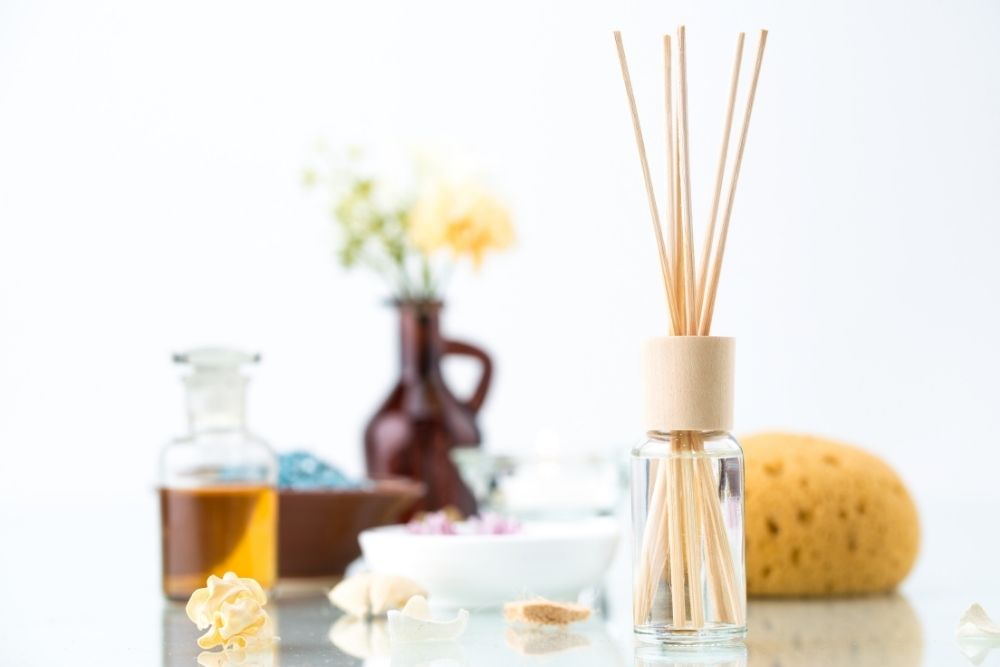
In the sense that it removes impurities through filtration, an air purifier differs from an air freshener. By spraying, an air freshener introduces nicely scented air particles into the air.
An air freshener emits a pleasantly scented stream of air, whereas an air purifier emits no scent.
And for those reasons, they are not similar.
Bottom Line
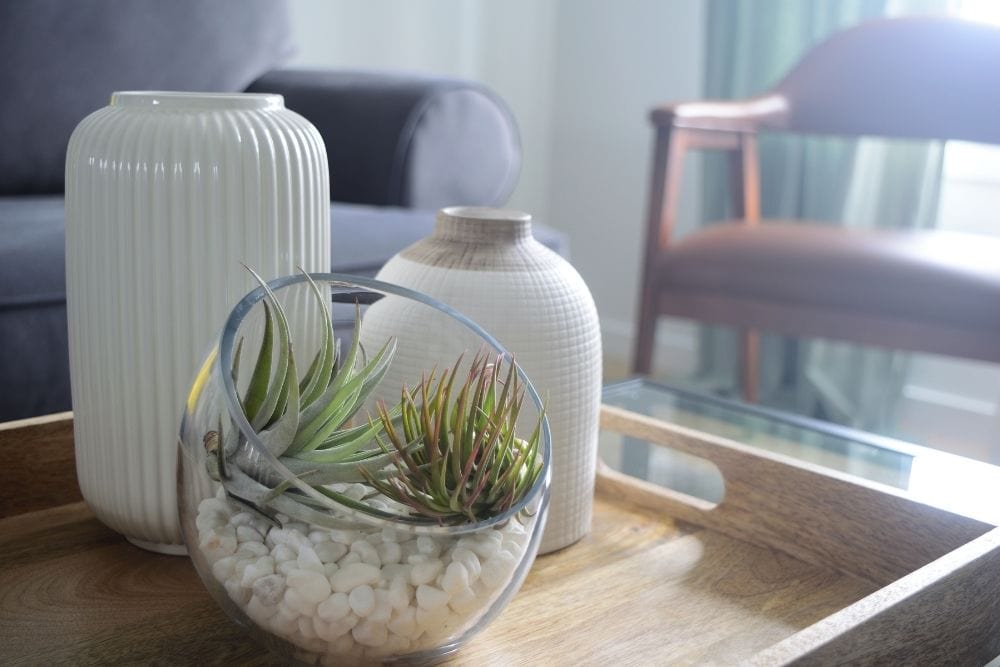
Finally, both the mentioned diffuser and the air purifier use the same ground to serve different purposes: but one thing in common is the air we breathe.
Both devices work to ensure that the air is pleasant to breathe. One ensures that it is clean, while the other adds a pleasant scent or even more moisture. They both do an excellent job.
Aside from that, we cannot deny that the diffusers appear to be more diverse in terms of style, which is great because everyone has a style. Also, consider the price and multi-functionality.
And for those reasons, it is safe to say that diffusers win this battle of diffusers Vs. Air purifiers. However, they do not have to be at odds; you can use both devices in your home.
One removes dust, pollen, mold, and other pollutants from the air, while the other adds a pleasant fragrance to the clean air. For instance, something like sweet orange, lavender, or fresh peppermint, or eucalyptus. Don’t you think it’s a fantastic idea?

I currently work as a medical receptionist, but my ultimate goal is to work as an occupational therapy assistant. Helping others achieve a better quality of life is something I’m after. That’s one of the main reasons I started this blog. Learn more about me.
